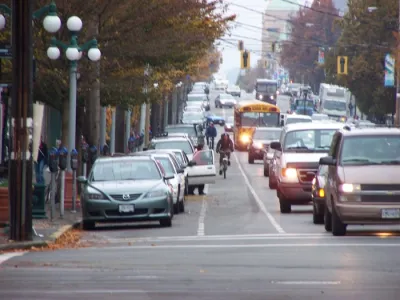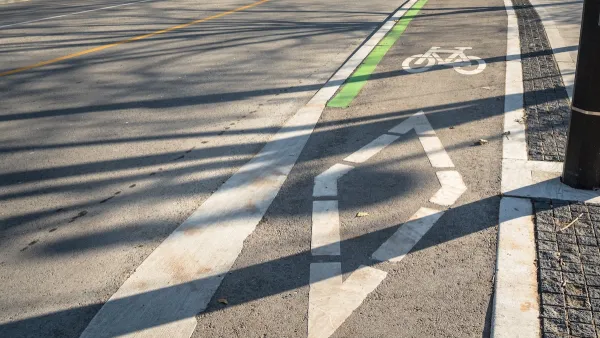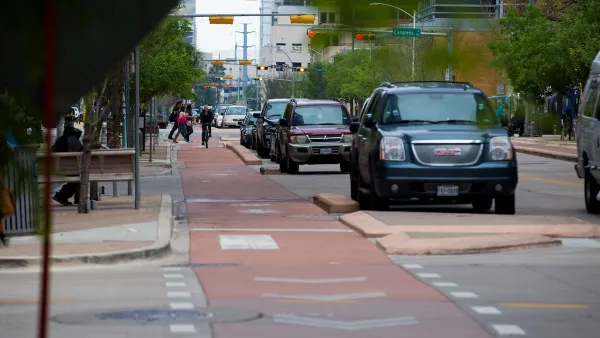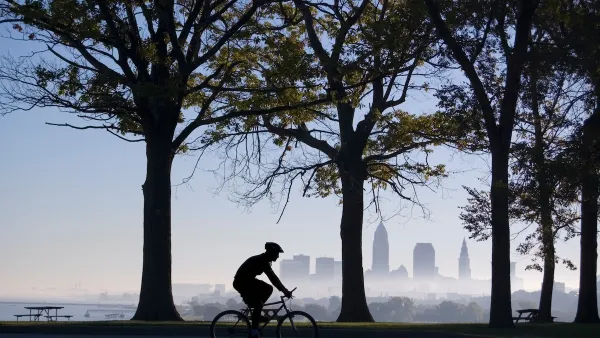A photo of a "backwards" buffered bike lane in Cleveland prompts commentary from the planning community. What is gained by separating bike lane and curb?

Cleveland is experimenting with an interesting design for bike lanes, one where a marked buffer lies not between bikes and vehicles, but between bikes and curb. Please see the article for a photo of the actual situation in Cleveland. It differs a lot from the usual buffered lane. From the article by Michael Andersen: "If you've got at least two feet of roadway to spare, you lay down some hash marks between car and bike lanes and double the comfort of biking on a street."
Nathan Wilkes of the Austin transportation department remarked, "The only use I have seen as shown in the photo is if there were parked cars to the right of the bicycle lane where there was more concern about the door zone than the moving traffic. In short it looks to be a waste of buffer material applied incorrectly."
Cleveland engineers argued that their design reduces the chance of cars turning right in front of bikes. Other reasons for the curious design might include using the wind from passing trucks to clear debris, or to make plowing snow easier.
FULL STORY: ‘Seems to be in the wrong place’: Peers react to Cleveland’s unusual bike lane

Analysis: Cybertruck Fatality Rate Far Exceeds That of Ford Pinto
The Tesla Cybertruck was recalled seven times last year.

National Parks Layoffs Will Cause Communities to Lose Billions
Thousands of essential park workers were laid off this week, just before the busy spring break season.

Retro-silient?: America’s First “Eco-burb,” The Woodlands Turns 50
A master-planned community north of Houston offers lessons on green infrastructure and resilient design, but falls short of its founder’s lofty affordability and walkability goals.

Test News Post 1
This is a summary

Analysis: Cybertruck Fatality Rate Far Exceeds That of Ford Pinto
The Tesla Cybertruck was recalled seven times last year.

Test News Headline 46
Test for the image on the front page.
Urban Design for Planners 1: Software Tools
This six-course series explores essential urban design concepts using open source software and equips planners with the tools they need to participate fully in the urban design process.
Planning for Universal Design
Learn the tools for implementing Universal Design in planning regulations.
EMC Planning Group, Inc.
Planetizen
Planetizen
Mpact (formerly Rail~Volution)
Great Falls Development Authority, Inc.
HUDs Office of Policy Development and Research
NYU Wagner Graduate School of Public Service




























